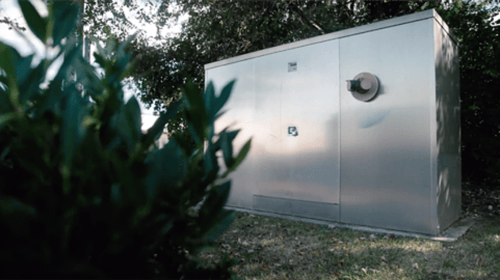 When a developer builds anything from a sidewalk to a stormwater catchment system, there are standards put in place by municipalities by way of codes or ordinances. These engineering guidelines protect residents from unsafe practices that could damage property or affect quality of life.
When a developer builds anything from a sidewalk to a stormwater catchment system, there are standards put in place by municipalities by way of codes or ordinances. These engineering guidelines protect residents from unsafe practices that could damage property or affect quality of life.
Arlington, a North Texas city of nearly 400,000 residents, expanded the reach of its standard details in 2016 to include the installation of backflow preventer assemblies immediately following the water meter. These changes to local law, and the motivations behind them, served as a template for other communities and their utility deployment, both in Texas and around the country.
Backflow assemblies ensure that potentially-contaminated stormwater cannot return to the public water supply – a concept referred to as premise isolation, containment or point of supply backflow prevention. Some states like New York, New Jersey, California and Washington have moved towards mandatory premise isolation for commercial and industrial uses. At the federal level, however, no such regulations exist.
The American Water Works Association – the voice for water utility operators – addressed this need in its literature. In the preamble to the Cross-Connection Control Manual published by the Environmental Protection Agency (EPA), AWWA states, “The return of any water to the public water system after it has been used for any purpose on the customer’s premises or within the customer’s piping system is unacceptable and opposed by AWWA.”
While this may seem like an overstatement of the obvious, it exists because backflow exists and can have dire, even deadly consequences.
.jpeg?width=500&name=backflow%20enclosure%200006%20(1).jpeg) New buildings are not our concern. Local plumbing authorities rigorously monitor all new construction projects. A permit to occupy a building is never issued until the building passes inspection. The vast majority of plumbing authorities across America have adopted one of two plumbing codes: the Unified Plumbing Code (UPC), or the International Plumbing Code (IPC). Both these sets of code have an exemplary record of protecting individual plumbing fixtures from becoming hazards to on-site users. This point-of-use backflow protection is carefully engaged at all locations where a cross-connection might occur, such as water fountains, coffee maker connections, soda dispensers, automatic dishwashers and so on.
New buildings are not our concern. Local plumbing authorities rigorously monitor all new construction projects. A permit to occupy a building is never issued until the building passes inspection. The vast majority of plumbing authorities across America have adopted one of two plumbing codes: the Unified Plumbing Code (UPC), or the International Plumbing Code (IPC). Both these sets of code have an exemplary record of protecting individual plumbing fixtures from becoming hazards to on-site users. This point-of-use backflow protection is carefully engaged at all locations where a cross-connection might occur, such as water fountains, coffee maker connections, soda dispensers, automatic dishwashers and so on.
But what goes on after construction can be a mystery. Each day, small business owners like restaurateurs, paint and body shops, auto mechanics, car washes, pet groomers and others, in the interest of improving some process, make small, uninformed changes to their plumbing on their own. Many of these changes unintentionally create cross-connections with the drain system.
Through a network of licensed inspectors, Arlington annually monitors testing of 3,000 “high-health hazard” backflow assembly sites, such as healthcare providers and restaurants. Backflow can occur for one of two reasons: high pressure on the premises pushes water back to city-owned water mains (back pressure), or because unusually-low pressure in the public supply piping pulls water back to city-owned water mains (back siphon).
Arlington had many motivations for implementing these new standards:
- Isolation from the inspection process. Because of the sheer number of proposals being reviewed, plumbing inspectors in Arlington’s building department are the primary gatekeepers for acceptable methods. These plumbing inspectors are experienced and knowledgeable, but the guidelines provide them with a clear picture of what backflow standards exist in the city.
- Unknown changes. Non-conforming and illegal changes to on-site plumbing systems are a problem for any water provider. TCEQ’s Customer Service Inspection program, which mandates a plumbing review of every property that undergoes a material change, is helpful but still limited only to properties where changes are announced by application of a building permit or sale. Publicizing these guidelines to commercial users with high health hazard designations is another way to prevent unknown, unintentionally-harmful changes.
- Subrogation risks. Subrogation is the authority given to insurers to be entitled to a claim for damages on the behalf of its insured when a third party caused a loss. Poor regulation of backflow prevention assemblies can put cities at risk if flooding or other property damage occurs.
- Local engineers’ survey. A survey conducted by EnviroDesign Management and Safe-T-Cover© over a two-year period was an important factor, as well. This survey of 1,220 DFW civil and plumbing engineers revealed that the local design community was in need of assistance from local water authorities. In February of 2015, the City of Arlington revealed that three of four local design engineers explicitly stated a need for standardized protocol.
Since making these updates to building code, Arlington and local builders alike have been pleased with the new guidelines. What makes it so easy is that, during the planning process, builders can simply write these exact details into the plans, getting rid of guesswork and contributing to the safety of the city’s water supply.
This article has been re-published with permission from The City of Arlington, TX. It has been updated and revised for readability and accuracy.
Joe Gildersleeve is Water Resources Services Manager for City of Arlington Water Utilities.




